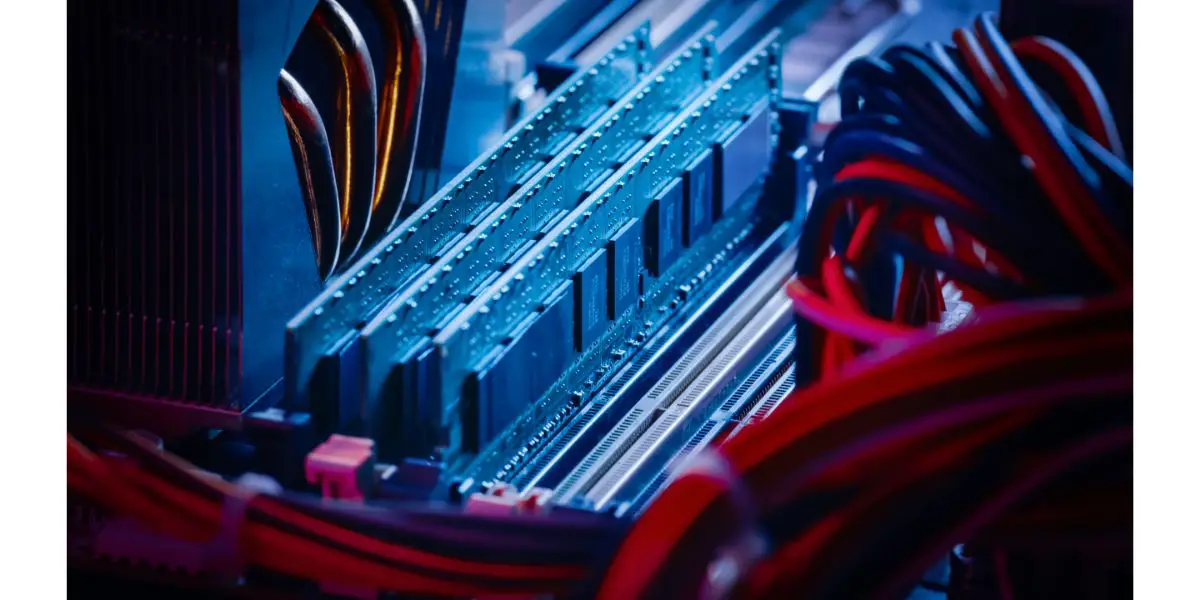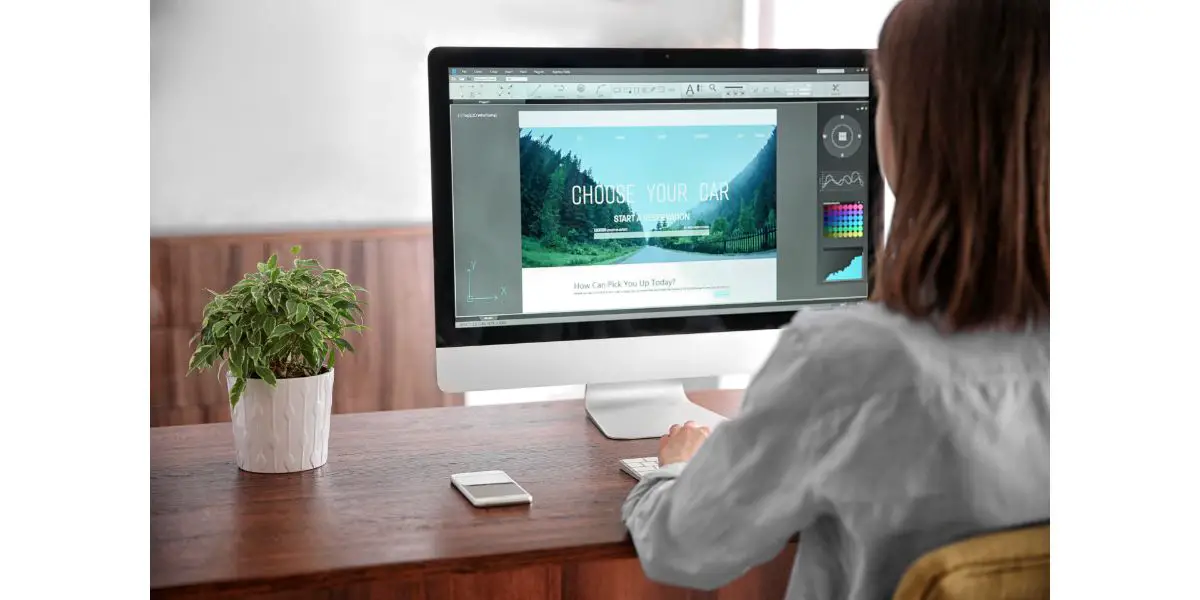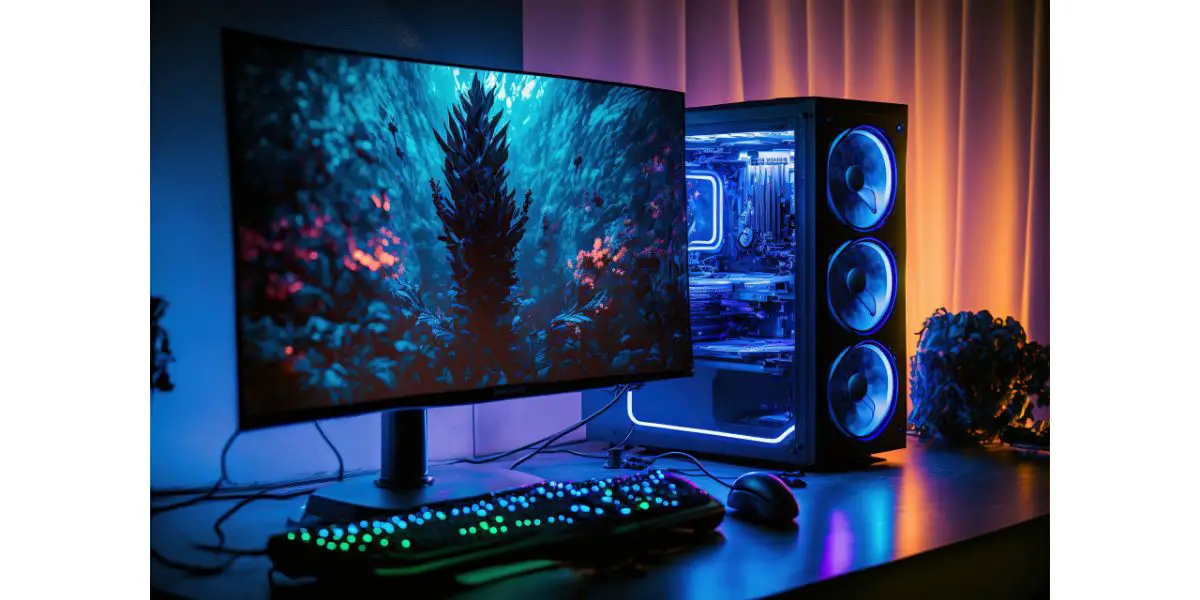Disclaimer: This post may contain affiliate links, meaning we get a small commission if you make a purchase through our links, at no cost to you. For more information, please visit our Disclaimer Page.
RAM is so important for computers that without it, even the digital clock on your computer wouldn’t work. Unfortunately, it’s easy for RAM to keep filling up, especially now that we multitask a lot more on our computers. So let’s talk about what you can do when your RAM keeps filling up.
Table of Contents
1. Close All the Programs You’re Not Using
All programs on PC and Mac require RAM to run in the background. Even if you’re not using them, they’ll use resources that you might need for other, more important programs. When too many programs run in the background, your RAM will keep filling up, regardless of the steps you take to manage it.
Closing the programs you’re not using is the first step that we recommend. That’s because when you’re running out of RAM, you most likely have too many programs running simultaneously, and restarting your computer may not be the ideal first step.
2. Restart Your Computer
If you’ve closed the programs you’re not using, and your RAM still keeps filling up, you might have to restart your computer to get rid of the background processes that take up resources.
Restarting the computer is the simplest solution when you’re running out of memory space for the processes and applications you need. Doing this will delete most of the memory and disk cache, giving you more RAM space for the programs you need to open.
3. Keep Your Browser Cache Clean
When you visit a website for the first time, a browser saves all the static files on your computer. This process is called browser caching, and it keeps you from redownloading the files whenever you revisit the website. Every browser you use for PC and Mac has this system to help you browse the web faster.
The caveat to browser caching is that it heavily relies on your RAM to work properly. The larger your cache is, the more RAM your browser requires. If you’re only browsing the web and notice that you’re running out of RAM faster, clearing your cache may help you address the issue.
Different browsers have different methods to delete the cache, but here’s how you can delete it in most browsers:
- Go to the Settings page of your browser.
- Look for History or Privacy and Security.
- Select Clear Browsing Data.
- Choose All time for the time range.
- Uncheck every box except for Cached Images and Files.
- Click Clear data.
Remember, this process will free up some RAM for your computer, but it will cause some websites to load slower when you visit them. If you don’t mind this trade-off, clearing your browser cache will help you have more memory space for your programs.
How To Prevent Your RAM From Filling Up in Mac
Here are some of the easiest steps that you can take to prevent your Mac computer from running out of RAM too quickly.
1. Uninstall Unnecessary Apps
macOS will convert some of your storage space into virtual memory if you need more RAM for the apps you’re using. The computer will transfer some of the files in its memory to the virtual memory to free up more space for your programs.
This conversion happens automatically, but you need to have enough free storage. To make this process seamless, you’ll have to uninstall the programs you don’t need, leaving enough room for your virtual memory.
If you need help uninstalling apps from your Mac computer, you can refer to this concise guide by Apple, showing you how to use Launchpad to uninstall apps.
2. Remove Startup Programs
When a Mac computer starts, it will load several apps in the background, making them more accessible. Some of these are messaging and utility apps you might not even need every time you use your computer. All these apps will consume RAM even if you’re not using them, which makes it essential for you to filter the apps you want to run on startup.
Here’s how you can disable Mac apps from running on startup:
- Go to System Preferences.
- Open Users & Groups.
- Click Login Items.
- Highlight the app you want to disable on startup, then click the (—) icon to disable it.
The fewer apps you run on startup, the more RAM you’ll have for other, more important programs you need for your task. Make sure you’re only disabling the ones you don’t often use because it will take time for these apps to load if you disable them on startup.
3. Delete Unused Programs From the Activity Monitor
The Activity Monitor is a feature for macOS that allows you to monitor the apps and tasks running on your computer. It helps you see the amount of memory each app uses and close them to free up more space for other programs.
Here’s how you can use the Activity Monitor to free up RAM:
- Open the Spotlight search, then search for Activity Monitor.
- Click the Memory button to see the RAM usage for the apps.
- Look for unused apps that are running and are consuming a lot of memory.
- Highlight the app that you want to delete.
- Click the X button to delete the app.
- Click Quit (or Force Quit if the app froze) to stop the app from running in the background.
4. Use the Finder Merge Options
Finder is a helpful program that allows you to manage your files within Mac. However, every time you use Finder, it will open a new window, which can take up RAM space. The amount of RAM that Finder needs can quickly add up as you manage your files.
However, there’s a way for you to merge all the Finder windows and convert them into tabs inside one window. Doing this will reduce the amount of memory it requires, freeing up more space for the other apps that you need to use.
Here’s how you can merge Finder windows:
- Click anywhere on the home screen to reveal the Finder dropdown. You’ll find this in the top-left corner of the screen.
- Click Preferences.
- Enable the Open folders in new tabs instead of new windows option.
The next time you open Finder, it will open in a new tab, which will help you conserve RAM and prevent it from filling up too quickly.
5. Check the Available Updates for macOS
Updating your macOS will help keep your computer secure and more efficient in managing RAM usage because of the bug fixes. It would be best to set your computer to receive automatic updates whenever Apple releases a new update.
If you need help updating macOS, you can refer to this concise guide from Apple on how to update macOS manually or set your computer to receive automatic updates.
How To Prevent Your RAM From Filling Up on a PC
Freeing up your RAM or managing its usage for a PC is straightforward because Windows made searching for anything easier with its search box. Let’s discuss what you can do when your RAM keeps filling up on a PC.
1. Disable Apps on Startup
Similar to Mac, you can disable programs on startup on PC. Doing this gives you more control over which apps will take up resources. Many PC programs run on startup by default, even those you won’t really need for your daily tasks. So being able to disable them will help free up a lot of memory space for other programs that you need.
Here’s how you can disable programs to run on startup in a PC:
- Go to the Windows Search Box.
- Type in Startup Apps.
- Go through the list of apps and turn off any app you don’t need.
2. Disable Background Apps
Windows runs many background apps that will send notifications and other necessary real-time information. Even if you’re not using these background apps, they’ll consume resources and may even increase your PC’s power consumption.
So it would be best to regularly check your startup apps and disable any that you don’t need running in the background. Here’s how you can disable background apps on your PC:
- Go to the Windows Search Box.
- Type in Startup Apps.
- Go through the list of all the apps running in the background and turn them off.
If you disable programs from running in the background, they will stop sending you real-time notifications. That’s why we recommend leaving the essential apps, such as the drivers, Windows security, updates, and messaging apps used for school or work.
3. Use Task Manager To Close Unnecessary Background Processes
The Windows Task Manager is a utility program that allows you to monitor the apps running on your computer with all the information you might need about them. It also allows you to close the apps you’re not using but are consuming too much RAM.
Here’s how you can use the Task Manager to close apps:
- Go to the Windows Search Box and type in Task Manager. You can also right-click on Windows Taskbar and select Task Manager.
- Click the Memory Tab to sort the apps by the amount of RAM they consume.
- Right-click on the apps you’re not using but are on the top of the list.
- Click End task to force the process to close and free the RAM it uses for its operation.
4. Reduce the Number of Browser Extensions
If you’re using a PC, there’s a decent chance that you’re using a browser that uses Chromium. It’s the open-source browser by Google that powers different browsers like Google Chrome, Microsoft Edge, and Brave Browser.
Chromium has decent RAM management, which closes unused tabs whenever you need more RAM for other programs. However, it also requires the most RAM on your computer, causing it to fill up quickly.
Unfortunately, the RAM configuration you can do for Chromium-based browsers is minimal. Aside from clearing the cache, the only thing you can do to manage RAM is to disable browser extensions that you’re not using. These browser extensions require additional resources and always run in the background until you force quit the browser.
That’s why it’s crucial for anyone using a Chromium-based browser to minimize the number of extensions you have to keep your browser from using too many resources. Here’s how you can disable Chromium-based browser extensions:
- Click the Menu icon on the top-right corner of the browser. It can be a three-dot icon or the hamburger menu icon.
- Click Extensions to open all the extensions installed in your browser.
- Disable or remove all the extensions that you’re not using.
Although the effects of disabling browser extensions aren’t as significant as disabling apps on startup or in the background, it will still help you free up additional memory space for the other apps you need on your PC.
5. Increase Your Virtual Memory
Unlike Mac, you need to manually increase your PC’s virtual memory to create more space for your apps. The good thing about it is that you’ll be able to assign the amount of storage you want to use as your virtual memory. Although it won’t solve all your issues when dealing with RAM that keeps filling up, it’ll still help you free up space for other apps.
Here’s how you can increase the virtual memory in your PC:
- Go to the Windows Search Box and type in File Explorer.
- Right-click on This PC, then select Properties.
- Scroll to the bottom and look for Advanced System Settings.
- Under the Advanced tab, look for the Performance section, then click Settings.
- Click the Advanced tab.
- Look for the Virtual memory section, then click Change.
- Uncheck the box for Automatically manage paging file size for all drives.
- Select your system disk.
- Click the radio button for No paging file, then click Set.
- Select another partition or your storage disk.
- Click the radio button for Custom size, then set the size you want for your virtual memory.
- Click Set, then OK to save all the changes you’ve made.
Consider Upgrading Your RAM
If you’ve done all the steps we shared and your RAM still keeps filling up, you might want to consider upgrading your RAM. A computer with 8GB RAM is decent for daily use, but if you’re opening multiple resource-intensive apps simultaneously, we recommend upgrading it to 16GB or even 32GB.
The more usable RAM you have in your computer, the faster it’ll be for you to open and switch between multiple apps. Aside from that, you won’t have to worry about running out of RAM when working on projects requiring large amounts of RAM.
Conclusion
Having enough usable RAM on your computer is essential to multitasking and keeping your computer responsive. Luckily, there are several ways to manage your RAM usage better.



